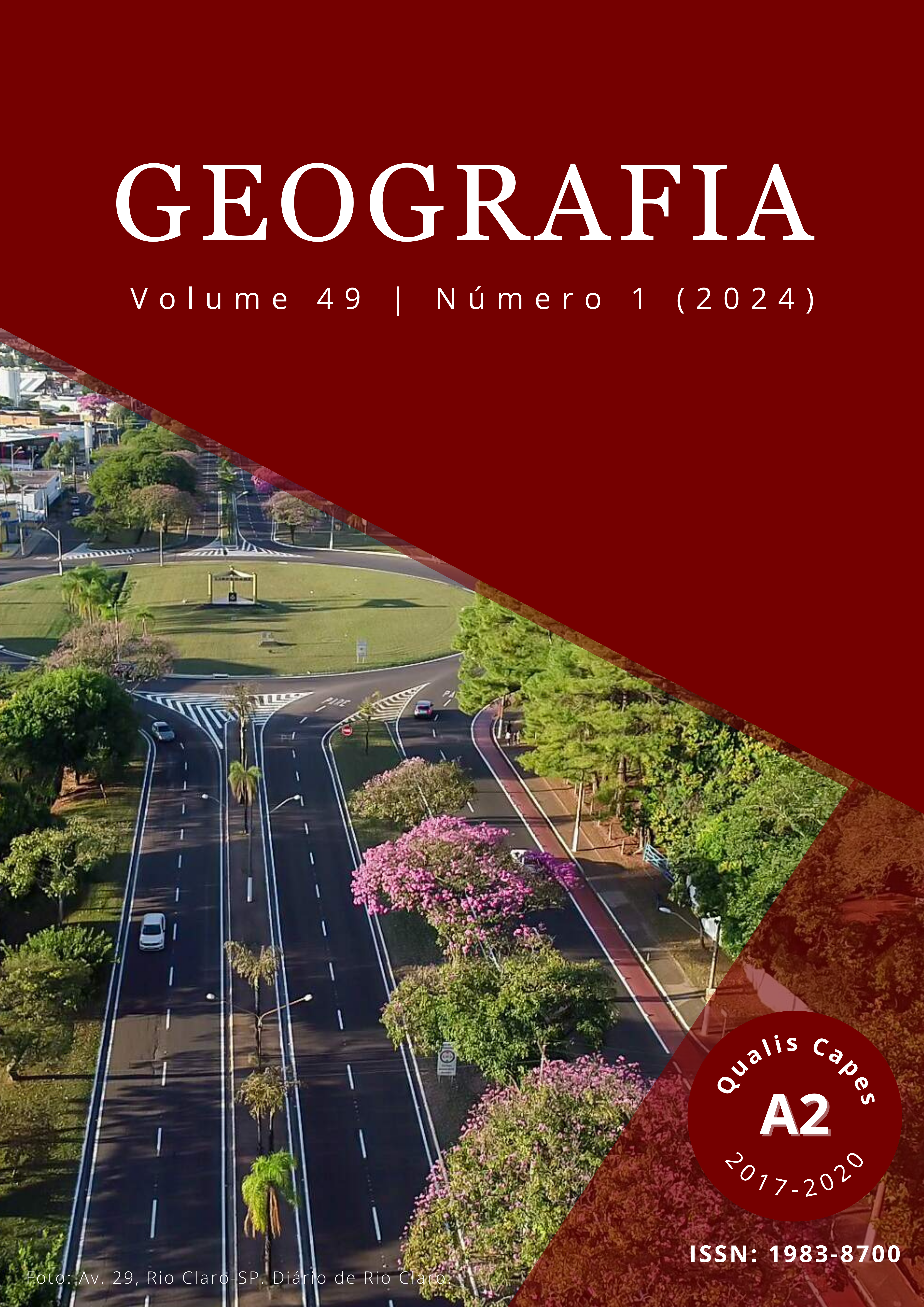Study of the relief dissection index (idr) matrix and its application in the municipality of Caldas - MG
DOI:
https://doi.org/10.5016/geografia.v49i1.18344Abstract
The Relief Dissection Index (RDI) plays an important role in geo-environmental studies, providing information about surface erosion, contributing to understanding landscape dynamics, and formulating environmental planning strategies. This article is a study of the RDI for application in the municipality of Caldas - MG. The method included corrections to digital elevation models, the extraction of morphometric data and an application study of relief dissection matrices proposed by Ross (1992, 1994, 2006), Nunes et al. (1994), and Guimarães et al. (2017) with subsequent calibration and adjustments to compose a specific dissection matrix for the area in question. In this context, relief dissection matrices were compared, and an adapted proposal was presented with the aim of obtaining results more consistent with the reality of the area under analysis. The results revealed that existing proposals, when applied to different areas and scales from those for which they were developed, tend to generalize some dissection classes, highlighting the need for adaptations to accurately reflect local characteristics. The adapted proposal encompassed dissection classes with greater precision.
Downloads
Published
Issue
Section
License
Copyright (c) 2024 GEOGRAFIA

This work is licensed under a Creative Commons Attribution 4.0 International License.
The authors maintain the copyright and grant GEOGRAFIA the right of first publication, with the articles simultaneously licensed under the Creative Commons BY 4.0 License, which allows sharing and adapting the articles for any purpose, as long as appropriate credits and provisions of image rights, privacy or moral rights. Other legal attributions can be accessed at: https://creativecommons.org/licenses/by/4.0/legalcode.en.
Geography, Rio Claro, SP, Brazil - eISSN 1983-8700 is licensed under the Creative Commons BY 4.0 License.





